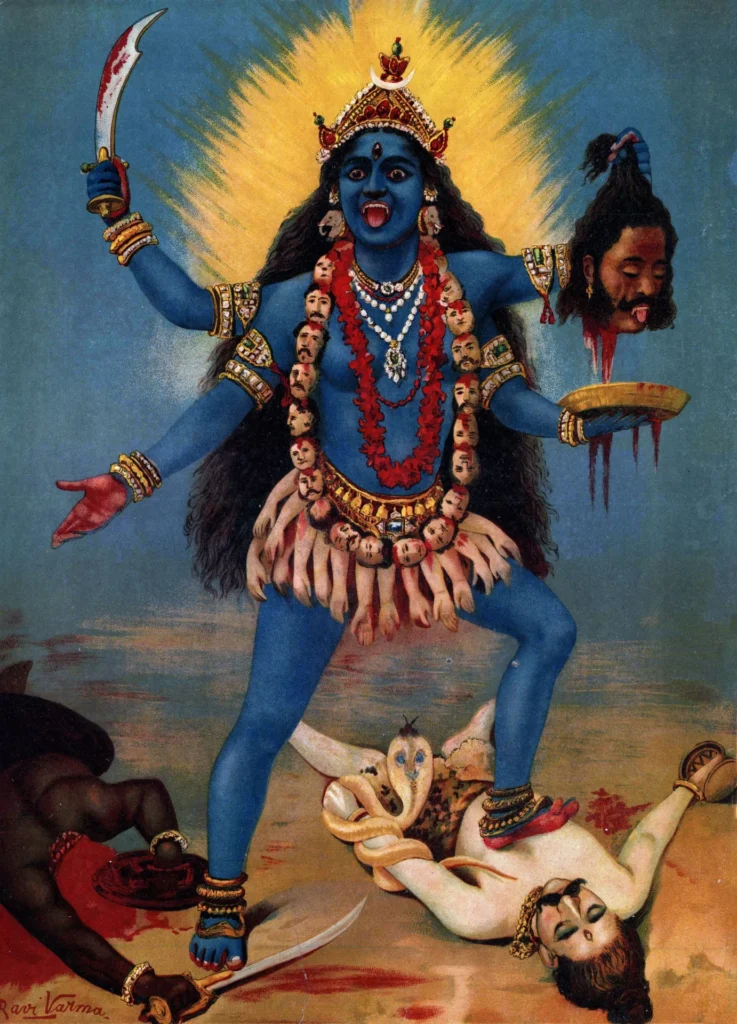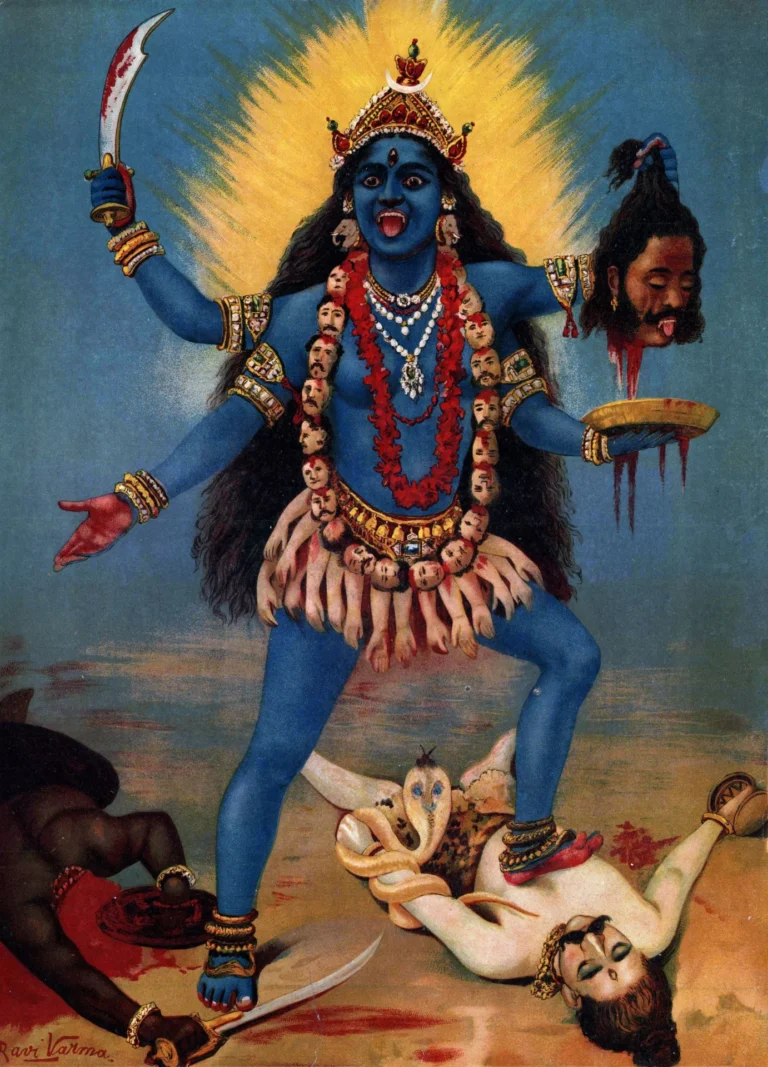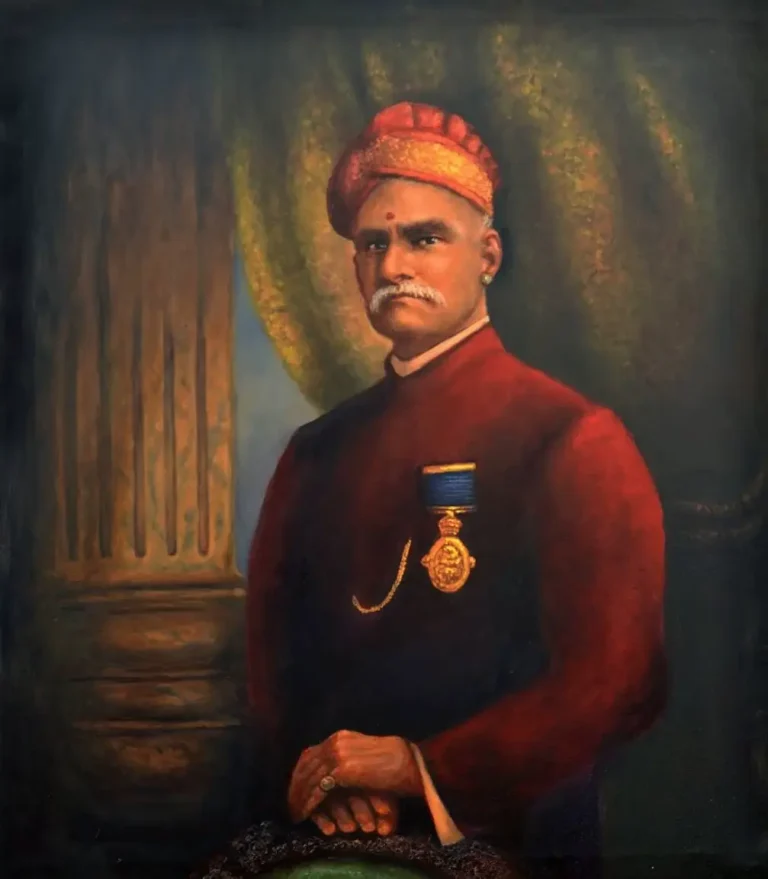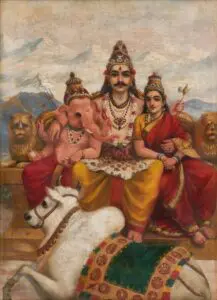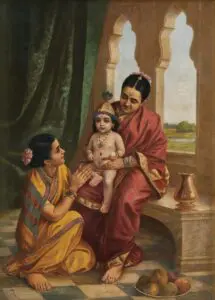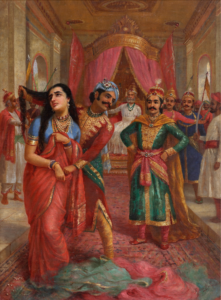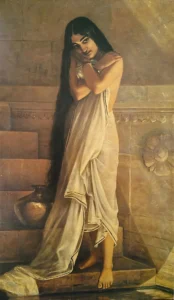Kali 2
Raja Ravi Varma's artwork Kali beautifully portrays the potent scene of Goddess Kali standing over Shiva, a significant moment in Hindu mythology. Created in 1910, this chromolithograph exemplifies Varma's ability to intertwine Indian iconography with the academic art techniques of Europe. This piece, through its detailed realism and mythological symbolism, has continued to resonate culturally and artistically, remaining accessible as it falls in the public domain.
Early 20th Century
About the Artwork
Raja Ravi Varma, a celebrated Indian painter, is renowned for pioneering the blend of Indian themes with European art techniques. His artwork Kali vividly portrays Kali, the formidable goddess, overpowering her consort, Shiva, which is a powerful symbol within Hindu mythology. Varma's ability to depict such scenes is rooted in his understanding of traditional Indian art forms, as well as his training in European realistic art techniques. During the late 19th to early 20th century, Varma popularized these themes, providing visibility and dignity to Indian subjects through art forms more widely respected at the time globally. In this particular artwork, the chromolithograph technique allowed for greater accessibility and reproduction, ensuring that such symbolic narratives reached a broader audience, thus enhancing the cultural dialogue.
Did You Know
In Hindu mythology, the scene of Kali standing over Shiva symbolizes the destruction of ego. This imagery represents transformation and the cyclical nature of life and death, central themes in Hindu spirituality.
Raja Ravi Varma was instrumental in introducing European academic art techniques to Indian mythology-themed artworks. His education in western art techniques allowed him to depict Indian deities with a lifelike presence.
The use of chromolithography in Kali allowed for mass production and accessibility, democratizing art and ensuring that even those who could not visit art galleries could experience Varma’s work.




